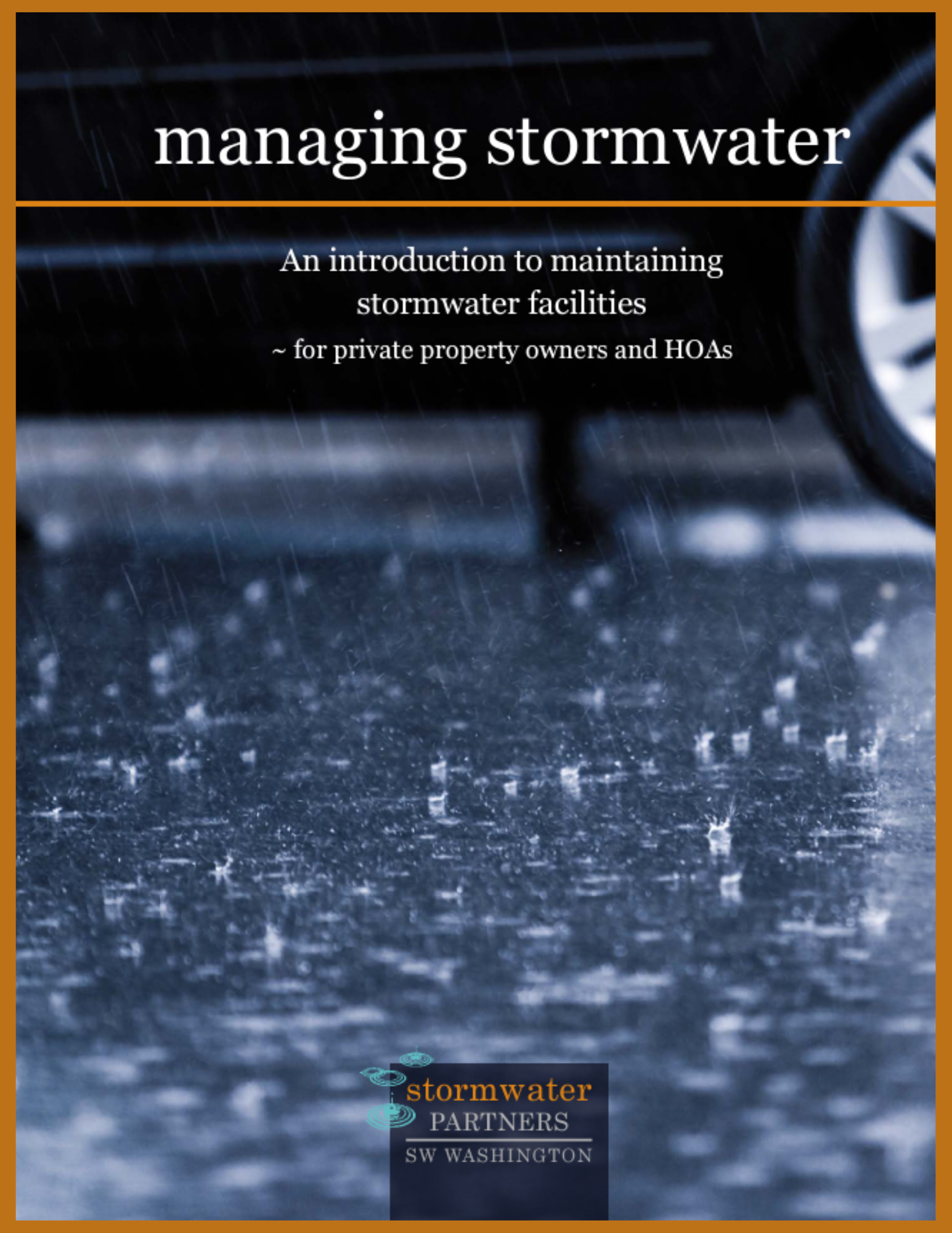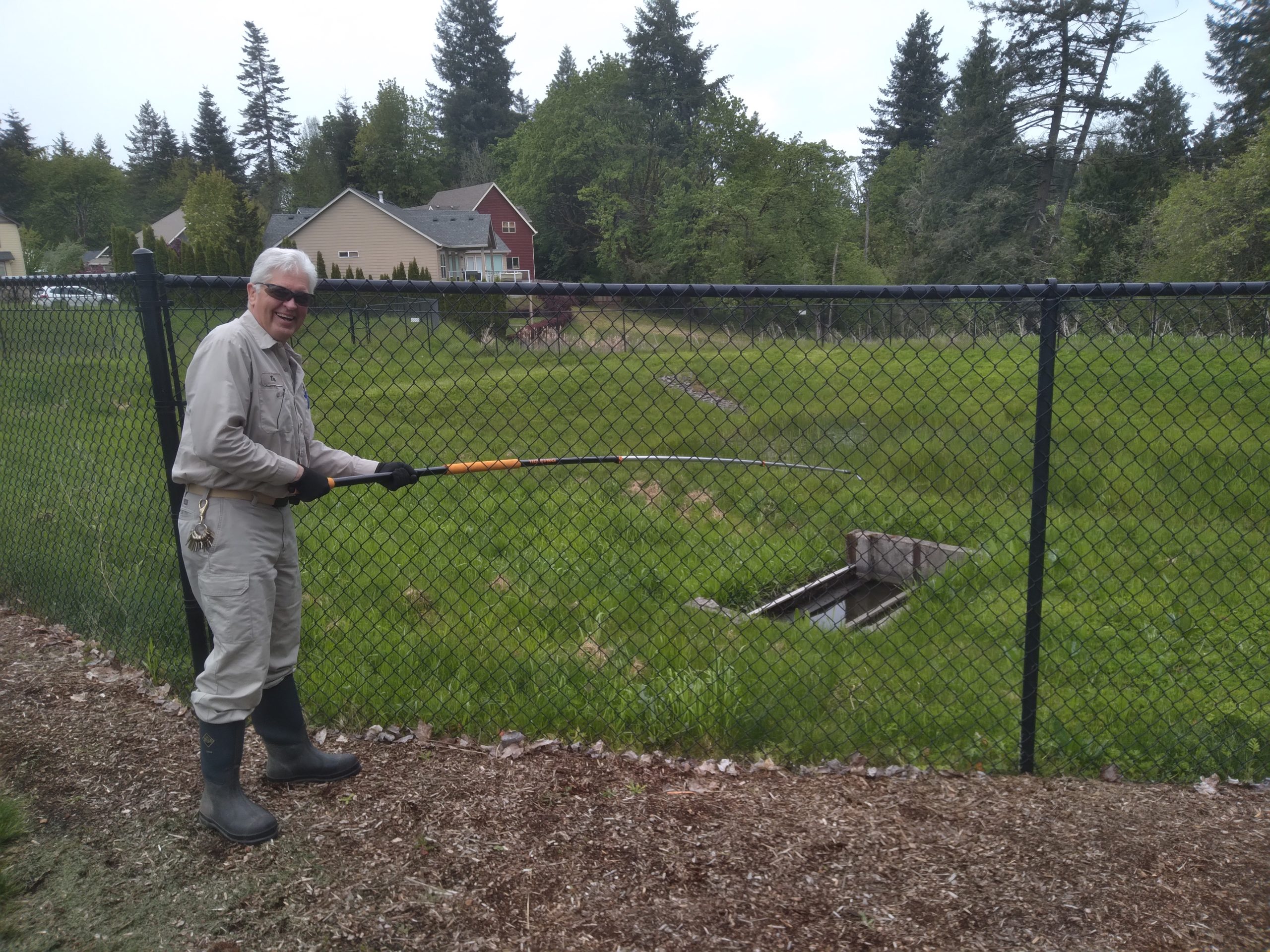Stormwater Facilities
Stormwater facilities are any structure designed to manage and treat stormwater runoff in a controlled manner to prevent flooding and erosion in urban areas. In addition to ponds often found in these facilities, they may contain a variety of other components to help assist in stormwater diversion (e.g., catch basins, headboxes, bioswales, etc.). For more information about these structures, please visit our “Mosquitoes and Stormwater Systems” page.
Though the primary goal of stormwater facilities is to hold and divert rainwater, the standing water within these systems can become ideal breeding habitats for certain mosquito species.
Treatment of stormwater facilities in Clark County typically begins in May and will continue throughout the mosquito season. All components of the facilities are monitored and treated as independent units, where treatment type and amount are determined based on where larvae and/or pupae are present.
For stormwater facility ponds and other water holding structures containing early-stage mosquito larvae (1st-3rd instar), a 30-day or 60-day residual granular larvicide is applied by either an electric handheld blower or gas-powered backpack blower, depending on the size of the treatment area.
If structures contain 4th instar larvae or pupae, an oil-based surfactant is applied to the water for treatment. This product creates a temporary film at the water surface that prevents both larvae and pupae from breathing, quickly killing all larvae and pupae residing in the structure. There is no residual for these products, and they will typically break down within 24 hours. For more information, please reference the Cocobear™ label here.
For structures within stormwater facilities that are more difficult to access during our monthly GO-4 larvicide treatments, we will also use 180-day residual extended-release briquettes. Catch basins and headboxes treated with briquettes are monitored throughout the season to ensure effectiveness.
During the late-spring to early-summer period when floodwater nuisance mosquito species are active, standing water mosquito species inhabiting retention ponds are not likely to be the primary source for mosquitoes. Please submit a service request if you are experiencing an issue and one of our vector control technicians will work to determine and treat the appropriate source.
Additional Resources

Stormwater Partners of SW Washington | Facilities

